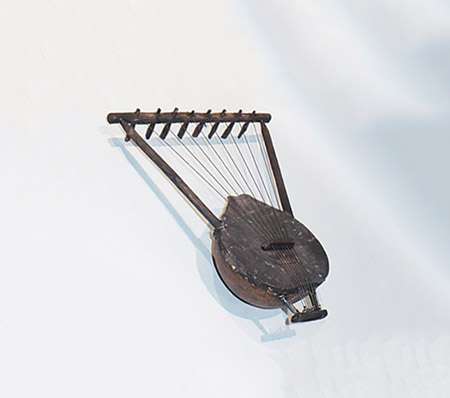Description
The Nyatiti is a traditional stringed musical instrument originating from the Luo community in Kenya and Tanzania. It's a type of lyre or harp-like instrument that plays a significant role in Luo traditional music. The Nyatiti is crafted from wood, with a hollowed-out wooden body that serves as its resonating chamber. It typically has eight strings, traditionally made from animal gut or plant fibers, stretched over a curved bridge at one end and secured to tuning pegs at the other end. The strings are plucked with the fingers to produce sound. The Nyatiti has a distinctive shape, with a long neck that curves upward and outward, resembling a bowl or a boat. The body of the instrument is often adorned with intricate carvings and decorations, reflecting the cultural aesthetics of the Luo community.Playing Technique: To play the Nyatiti, the musician holds it vertically, resting the body of the instrument against their chest or abdomen. Using both hands, the musician plucks the strings with their fingers, producing melodic tones. The tuning and pitch of the strings can be adjusted by turning the tuning pegs.Sound: The Nyatiti produces a rich, warm, and resonant sound with a distinctively African timbre. Its melodies are characterized by intricate rhythms, melodic patterns, and improvisations, often accompanying traditional Luo songs, storytelling, and cultural performances.Cultural Significance: The Nyatiti holds significant cultural importance among the Luo people, serving as a symbol of cultural identity and heritage. It is traditionally played during various cultural ceremonies, rituals, and social gatherings, including weddings, funerals, and community celebrations. The Nyatiti's role extends beyond mere entertainment; it is also used to convey messages, preserve oral traditions, and transmit cultural knowledge from one generation to the next.Contemporary Context: While the Nyatiti remains an integral part of Luo culture, its use has evolved over time. In addition to traditional contexts, the Nyatiti is also being incorporated into contemporary music genres and collaborations, contributing to the preservation and promotion of traditional East African music.




